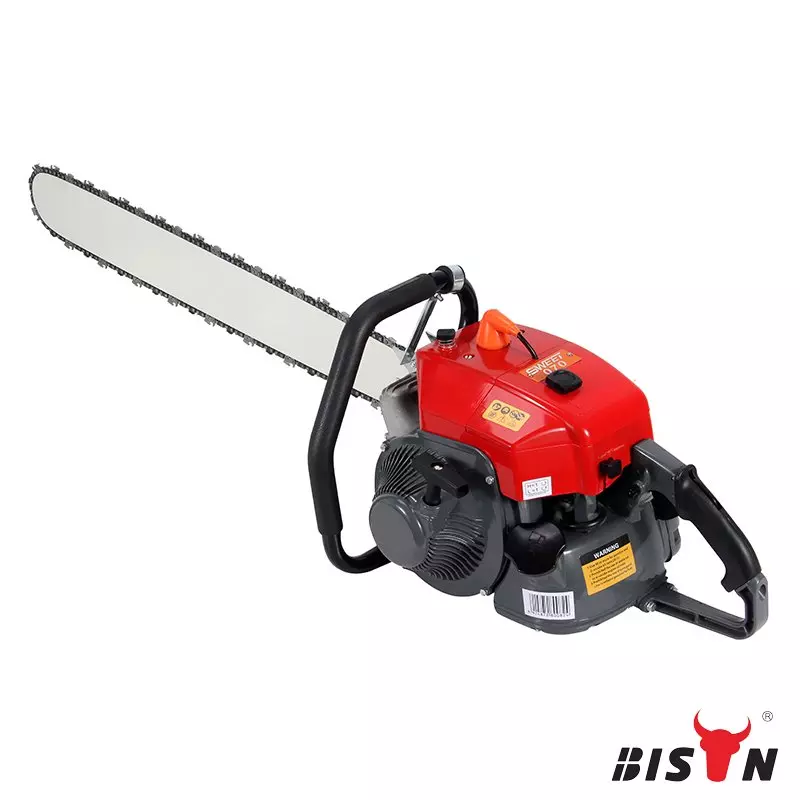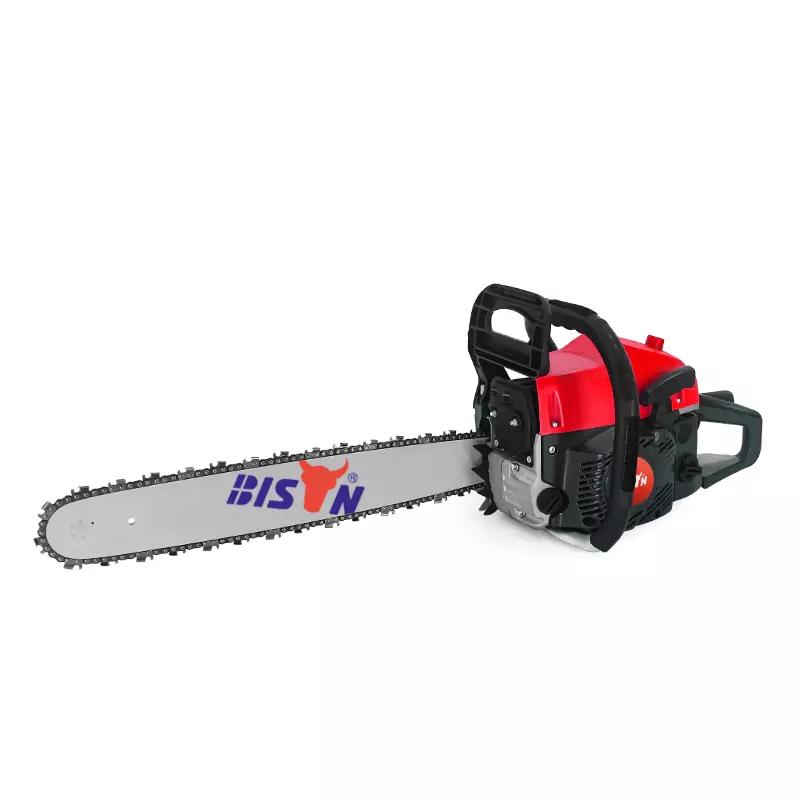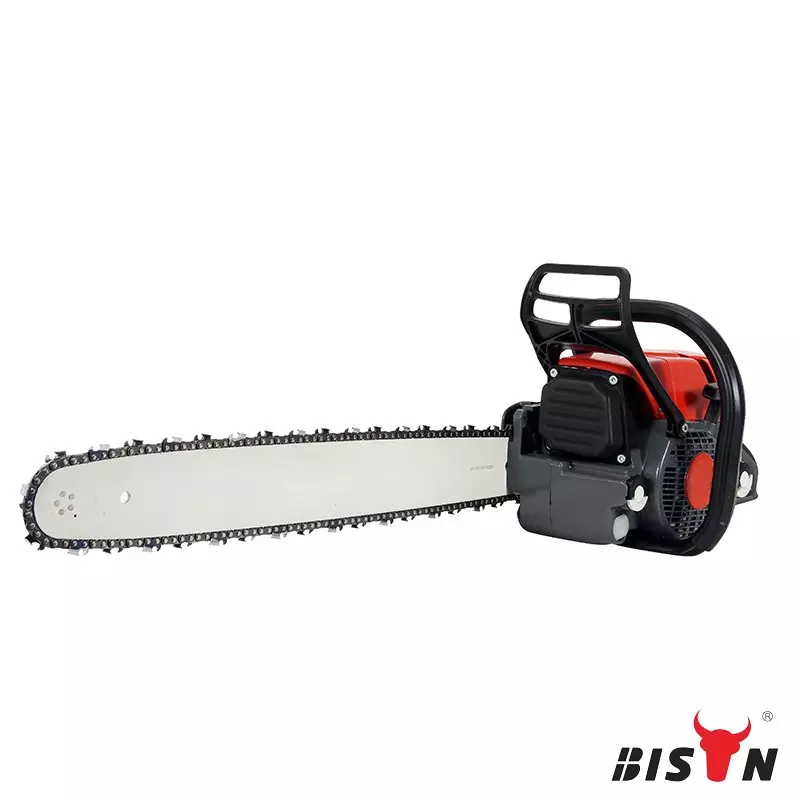How to tighten a chainsaw chain
2023-01-09
Table of content
How to tighten a chainsaw chain
A chainsaw is a dependable woodcutting machine that features a chain loop guide bar. It works fine when the chain fits on the groove and doesn't come off, no matter the speed.
The chain may, however, extend and become loose due to continual use, additional stress, and friction. In addition to being risky, a loose chainsaw chain can provide poor cuts. Heavy use can cause the chainsaw chain to loosen faster.
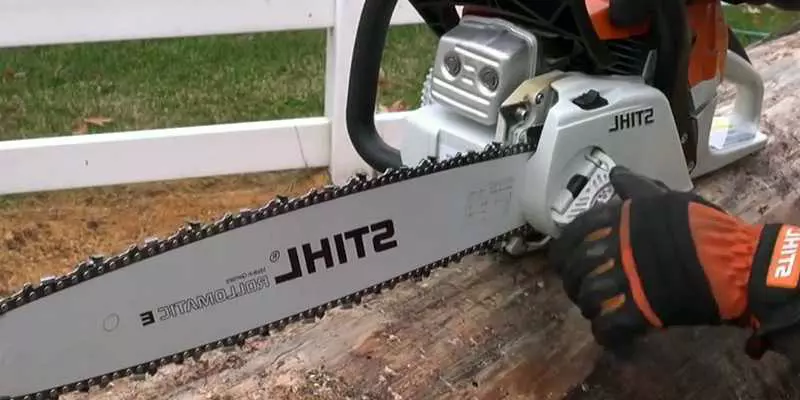
BISON Chainsaw
People are forced to apply more pressure when cutting the wood when the chain doesn't fit snugly on the guide bar. More pressure means more energy is released by the user, and the cut loses precision.
Tightening a loose chainsaw chain is easy enough for anyone with little tool experience to handle with proper guidance.
Most brands have a similar tightening process, and a few vary. However, users can tighten loose chainsaw chains with the required information.
Why is the fit chainsaw chain essential?
Getting a fit chainsaw chain is not an option but a requirement for safe and clean cutting. To check if your chain is loose, watch the chain to see if any parts come off the guide bar when hanging freely and at rest.
It is also a problem that the chain is mounted too tightly on the guide bar, as it does not leave room for the chain to rotate smoothly. When you pull the chain, and it doesn't move, you know it is too tight. By holding a part of the chain and tugging it away from the guide bar, you can also determine if the chain is too tight.
Steps to tighten a chainsaw chain?
Simple procedures and a minimal set of tools are needed to tighten a loose chainsaw chain.
Similar to that, anyone can tension a chain in a matter of minutes if they follow the right procedure. Again, the only tools needed are chainsaw pliers, a flathead screwdriver, or a wrench.
1. Preparation
Safety is paramount when using power tools with sensitive parts like chainsaws. To make sure there isn't any possible electrical power going to the chainsaw, turn off the ignition and remove the spark plug wires.
Even though the chain is loosened, the teeth are still dangerously sharp. Wear thick safety gloves to protect your hands before touching the chain.
2. Check breaks
Some chainsaws have stops on the side plates, so you should take an extra step before tightening. If the brake is mounted on a side plate, unlock the brake. Now you can handle the nuts without hindrance.
3. Loosen the bar nut
The rod nut secures the rod to the side plate, keeping the rod stable regardless of pressure. Locate the bar nut under the handle and loosen it firmly.
It allows the guide rod to move up and down when the rod nut is loose. It also allows the bar to move forward to make room for adjusting the chain.
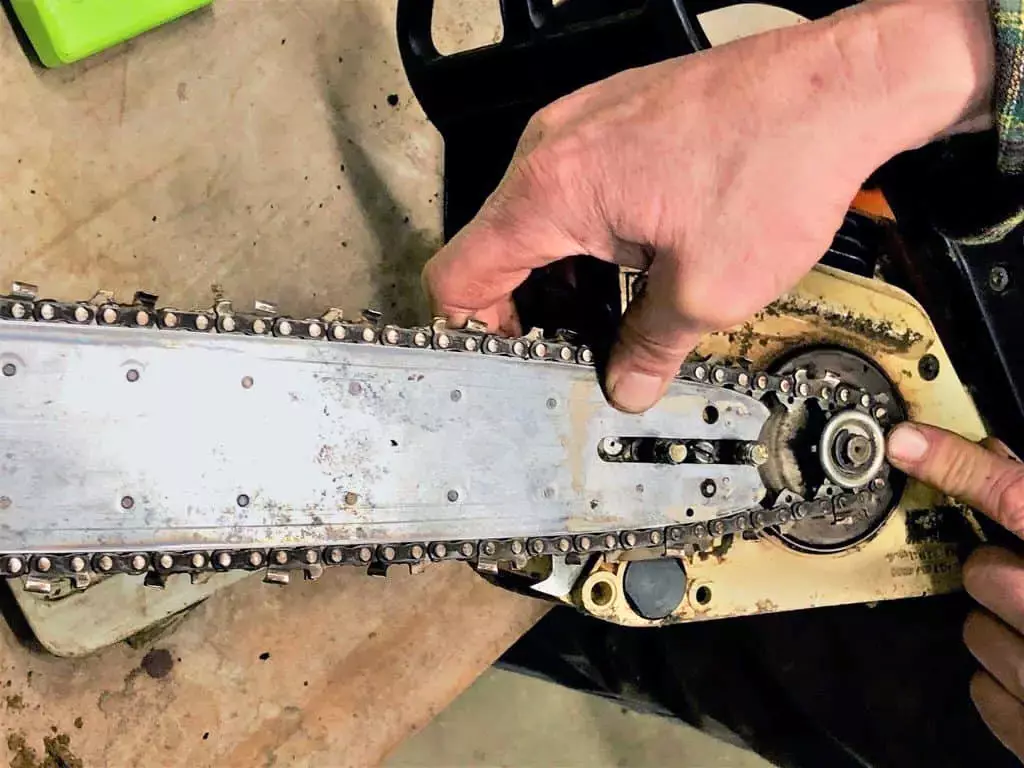 <
<
Adjusting the Chainsaw Chain
4. Adjust the tensioning screw
The tension screw, which may be tightened and loosened as necessary, regulates the tension in the chain.
Here, tighten the bolts to increase the tension on the chain and shorten it. This tensioning screw is located on the side of the guide rod. The screws typically have a flat head and are positioned near the panel.
To tighten the chain, use a flathead screwdriver. By moving the screw a tiny bit in both directions, you can verify that it is turning in the proper position.
Adjusting the tensioning screw pulls on the chain member inside the side panel chamber. When the screw is tightened, it appears as though the chain's size has decreased.
5. Check tension
Grab the chain and pull it away from the bar to see if it's tight enough. You can proceed to the next step if you have achieved the desired tightness.
6. Readjust the guide rod nut
Once the desired tightness is achieved, the next step is to readjust the guide nut that was loosened earlier.
First, lift the tip of the guide a little, so you don't lock it in the wrong place. Next, use the socket end of the scrench to tighten the nut until the rod is firmly seated and will not move anymore.
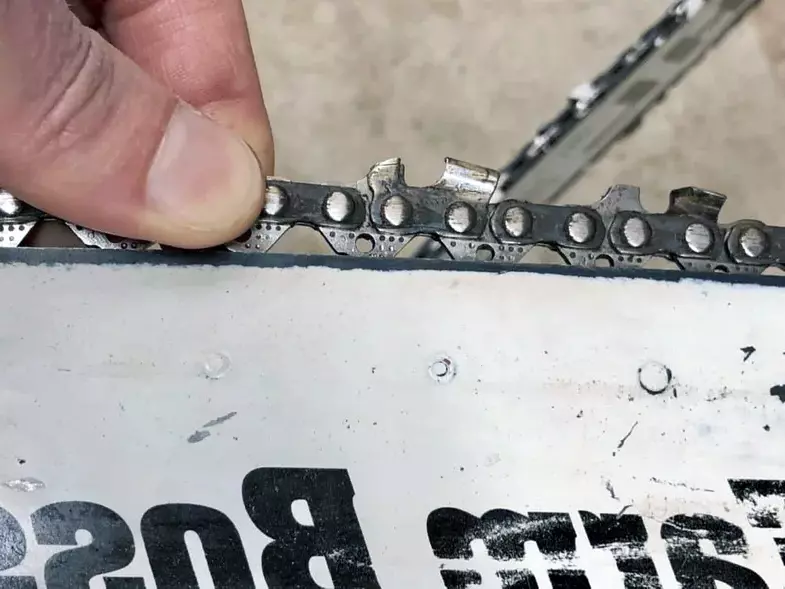
Checking the Chainsaw Chain
7. Test the chainsaw
Testing is important to make sure you have the correct tension and guide rod position.
First, turn on the guide bar by plugging it into power and connecting the spark plug wires. Next, use the chainsaw to cut a small piece of wood. Watch for strange sounds and vibrations that indicate loose nuts or parts.
Tighten any loose nuts and enjoy the chainsaw.
FAQs
1) Why is my chainsaw chain loosening so quickly?
One of the most common reasons a chainsaw chain can loosen so quickly is wear and tear from time and use. If you have an old chainsaw, you will notice that the chain often comes loose due to wear on the chain and sprockets. This also happens to new chainsaws that have yet to be used before. New chains will need to be tightened more often as they stretch a lot the first few times they are used. This is the "run-in" period for your chain.
Another cause that can cause a chainsaw chain to loosen quickly is heat. During operation, the chain is subjected to enormous pressure and friction. Friction arises from sawing material such as wood. Friction and pressure make the chain and guides very hot, which expands the metal. After using the chainsaw, the metal will cool and return to a smaller size, but the chain will remain loose.
If you've done everything else correctly and the chainsaw chain is still loose, you may have more mechanical problems on your hands. In this case, feel free to get in touch with a quality tool supplier for assistance.
2) Can you stop your chainsaw chain from stretching?
Unfortunately, you can't stop a chainsaw chain from stretching over time. Your chain is constantly changing with use; it's only the degree of change that varies. You'll notice the biggest difference when you first get your new chainsaw and chain because it will stretch a lot. After the chain wears down a bit, the intervals between when you need to loosen the chain will be greater. When a chain has worn a lot and has been exposed to a lot of wear and tear, it needs to be tightened more often.
Because of the constant changes, it's essential to check the chain tension regularly before using the chainsaw. It's a good idea to check every time you use your chainsaw. Make it part of your daily preparation routine to get the most out of your chainsaw while taking proper safety precautions.
3) How tight should a chainsaw chain be?
Many people need to learn how tight a chainsaw chain should be and sometimes over-tighten the chain. The correct tension for a chainsaw chain is when it fits snugly on the guide bar.
Grab the chain and pull it away from the bar. It should stretch a bit, but the chain part should stay on the guide bar. This position indicates that the chain is tight enough.
4) How often should you tighten your chain?
It depends on how often you use the chainsaw. For example, 4 hours of continuous work may require you to tighten the chain up to 3 times.
5) Why does a chainsaw smoke?
A smoking chainsaw can result from extra pressure on the guide bar, causing a cut. A loose chainsaw can cause you to put a lot of pressure on the bar and cause the chain to smoke.
Conclusion
Chainsaws are powerful power tools. Although more battery-powered models are now available, many still run on petrol or diesel and produce deafening noises during operation. Operating one requires physical strength and attention to safety. When the chainsaw chain is too loose, there is an increased risk of the chainsaw kicking back or the chain falling off, both of which can lead to injury.
Generally, users should check the chain tension before using the saw and frequently during use. Once you've mastered the chain tightening process, which won't take more than a few minutes, the only tool you'll need is a tightener.
However, tightening the chain is not a panacea for chain wear. Over time, usually months of heavy use, the chain wears out, and the blade wears out. When you start tightening your chain twice as often as you did with a new chain, it may be time for a new chain.

